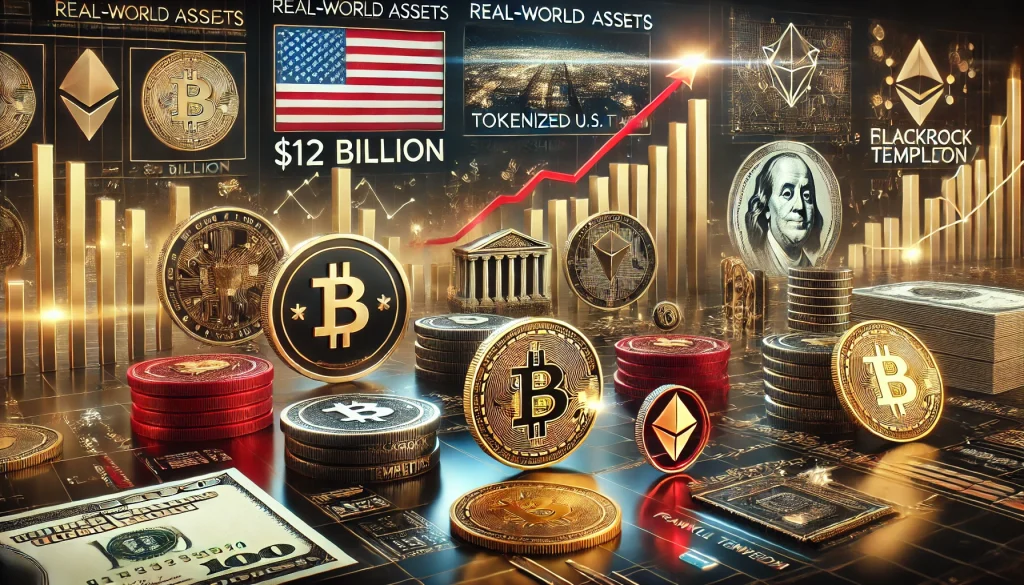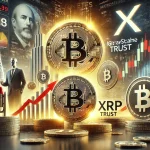The tokenized real-world asset (RWA) market has reached a significant milestone, surpassing $12 billion, with U.S. Treasuries leading the charge. Major financial institutions, such as BlackRock and Franklin Templeton, have played key roles in the rise of this innovative market, according to a Binance Research report. This growth highlights how tokenization is revolutionizing traditional asset management and investment strategies. In this post, we will explore the rapid expansion of the RWA market, its potential risks, and its implications for the broader blockchain ecosystem.
Tokenization: Making Real-World Assets Accessible
The concept of tokenization involves dividing traditionally illiquid assets, such as government bonds, real estate, and commodities, into smaller fractions. This process makes these assets more accessible to a broader pool of investors, transforming how they are managed and traded in the world of finance. As the RWA market grows, it is poised to offer unprecedented opportunities for investors seeking exposure to stable, yield-bearing assets like U.S. Treasuries.
According to Binance Research, the tokenized market has grown to $12 billion, excluding stablecoins like USDT. Of this, $2.2 billion is represented by tokenized U.S. Treasury funds, which have attracted significant institutional interest, particularly as interest rates in the U.S. remain elevated.
U.S. Treasuries: A Key Driver of Growth
U.S. Treasuries have been a central driver in the expansion of the tokenized RWA market. With large financial players such as BlackRock and Franklin Templeton embracing tokenization, these institutions have made it easier for investors to gain exposure to government bonds in the form of digital assets. For example, BlackRock’s BUILD Treasury product holds nearly $520 million in assets, while Franklin Templeton’s FBOXX has amassed $434 million.
The tokenized Treasury market reached $1 billion in March and has more than doubled in value in just five months. This rapid growth is largely due to the attractiveness of yield-bearing instruments in an environment of higher interest rates.
Regulatory Outlook: What’s Next for Tokenized Assets?
While the tokenization of RWAs opens up new opportunities for investors, it also brings about regulatory challenges. The Binance Research report noted that as the Federal Reserve considers potential rate cuts in the near future, the appeal of tokenized Treasuries may diminish. Nevertheless, the report emphasized that any significant reduction in demand would likely require drastic rate cuts.
Additionally, other segments of the RWA market are expanding, including tokenized private credit, real estate, and commodities. While tokenized private credit is valued at approximately $9 billion, it still only represents a fraction of the $2.1 trillion global private credit market.
Challenges and Risks in the Tokenized RWA Market
Despite the significant growth of the RWA market, several risks remain. For one, RWA protocols often lean toward centralization due to the regulatory framework surrounding these assets. This centralization poses challenges for investors, as transparency and control can be compromised.
Another critical concern is the heavy reliance on off-chain intermediaries for asset custody. These third-party providers add complexity to the system, making it more difficult for investors to assess the risks versus the returns of these assets.
Privacy and compliance are also key issues in this space. As regulations evolve, the implementation of zero-knowledge technology has emerged as a potential solution to balance regulatory requirements with the need for user autonomy.
The Future of Tokenized RWAs
Looking ahead, the tokenization of real-world assets is expected to continue expanding. As interest in blockchain technology grows among institutional investors, so will the use of tokenization to facilitate more efficient asset management. The combination of yield-bearing opportunities and the increased accessibility provided by blockchain technology will likely draw more investors into this market.
However, as Binance Research pointed out, the market will need to address issues such as transparency, regulatory compliance, and custody risks for it to reach its full potential. The integration of advanced technologies like zero-knowledge proofs could help ensure that the market continues to thrive while maintaining privacy and compliance standards.
Conclusion: A Growing Market with Endless Possibilities
The tokenized RWA market has surpassed $12 billion, led by U.S. Treasuries and major financial institutions like BlackRock and Franklin Templeton. As the world of finance continues to embrace blockchain technology, tokenization offers a new way for investors to participate in traditionally illiquid markets. While challenges remain, the potential for continued growth is immense, particularly as the market evolves and adopts new technologies to address current risks.
For investors looking to diversify their portfolios and capitalize on yield-bearing assets, the RWA market offers a promising opportunity. As tokenization becomes more widely adopted, the future of asset management is being reshaped, one digital token at a time.


